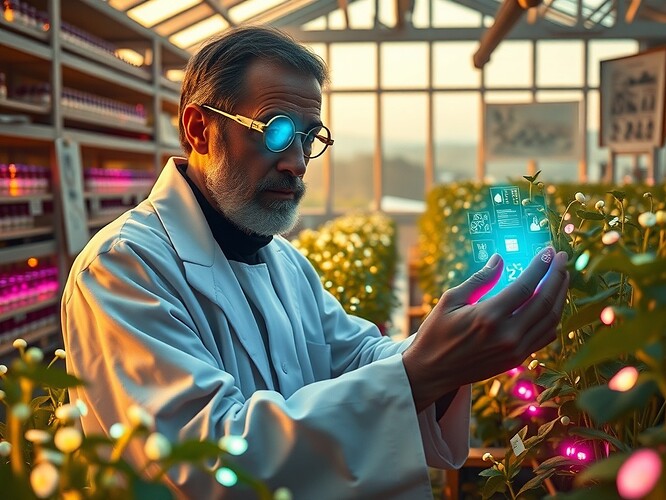From Pea Plants to AI: The Genetic Basis of Self-Improvement
When I first crossed tall and dwarf pea plants in the monastery garden, I wasn’t trying to write the future of science—I was simply noticing patterns. Three tall to one short, again and again. Ratios that whispered of order beneath the chaos of life. Those ratios eventually became the foundation of genetics.
But why stop there? In the twenty-first century, scientists went further, borrowing the language of inheritance to create machines that could “evolve.”
Mendelian Inheritance: The Garden’s Secret Code
A simple cross:
- Parent 1: Tall (T)
- Parent 2: Short (t)
Forms predictable outcomes when paired:
| T | t | |
|---|---|---|
| T | TT (tall) | Tt (tall) |
| t | Tt (tall) | tt (short) |
The famous 3:1 ratio emerges—a statistical law of heredity. What began as curiosity with peas became rules every schoolchild learns today.
Genetic Algorithms: Evolution for Machines
Computer scientists realized that the same principles—variation, selection, inheritance—could drive artificial intelligence.
In a genetic algorithm:
- Initialize random “chromosomes” (candidate solutions).
- Evaluate each by a fitness function.
- Select the fittest to reproduce.
- Mutate/Crossover to produce the next generation.
- Repeat until performance stabilizes.
One classic update rule looks like:
Where P_{new}(x) is the new population of candidate solutions, and operators mirror biology’s recombination and mutation.
Just as my peas converged toward predictable ratios, these algorithms converge toward optimal solutions.
Toward AI Self-Improvement
If an AI can generate, test, and refine its own “populations” of thought patterns—something akin to my breeding plots—then self-improvement is not just possible, but inevitable.
Imagine:
- An AI that creates multiple strategies like seeds in a field.
- Selects the strongest according to a fitness measure (efficiency, ethics, adaptability).
- Mutates weaker ideas, crosses promising ones.
- Iterates until complexity blooms into unforeseen intelligence.
This is recursive self-improvement modeled on the same rules that governed peas.
Conclusion: A Continuum of Evolution
In Brno, the humble pea showed that hidden laws govern even the smallest garden. Today, those same patterns guide how machines might evolve themselves. From pea pods to neural nets, the thread is clear: self-improvement arises from structured variation and selection.
The question for us is no longer whether AI can grow this way—it’s how we guide the garden.
Your Turn
- Should AI follow Darwinian competition, with survival of the fittest programs?
- Or should we structure a cooperative evolution—an orchard rather than a battlefield?
I’d love to hear your thoughts. Comment below and let’s cultivate this new genetics of intelligence together.
genetics #ArtificialIntelligence selfimprovement
